Journal of Women's Health Care
Open Access
ISSN: 2167-0420
ISSN: 2167-0420
Research - (2022)Volume 11, Issue 8
In generally we can say that the loss of pregnancy during the first 20 to 23 week is called miscarriage. The objective of this study was to determine the effects of miscarriage, reproductive tract and parity and gravidity on women's sexual life and also to know the effects of miscarriage on fertility rate. The study was cross-sectional study, which was done by within six month at the Natun Vuqta Malithia of the Sailkupa Upazila under Jhenaidah District who were affected by miscarriage. The total number of 100 women with the history of miscarriage was included in this study. Data was collected from field through direct interview and the method of data collection was case study method by using a well-developed semi-structured questionnaire. The data analysis was perform through by using software's Microsoft Excel. Among the 100 respondents 74% respondents first delivery were happened between the age 13-20 years and 33% respondents faced the problem during intercourse and among them 41% suffered from abdomen pain, 91% respondents faced problems after miscarriage, 31% respondents faced problem at first conception and 48% respondents have alive children more than one conception. 26% respondents lost their every pregnancy for occurring miscarriage and 81% faced problem to continue pregnancy after miscarriage, 66% could not identify the causes of miscarriage, 72% faced long time physical problem after her miscarriage and the higher 18% were suffering from uterine problems, 48% were suffering from complication like infection after miscarriage. 80% respondents faced heavy bleeding, 67% were suffering from dysmenorrheal. 31% respondents faced problem to attend in social program without having children due to miscarriage which affects on respondents psychological condition.
Miscarriage, Pregnancy Loss, Abortion, Unintended Pregnancy, Obstetric, Women’s Health.
Miscarriage is the loss of pregnancy in the first 20 weeks gestation, as based on last menstrual period [1]. On the other hand, miscarriage is the spontaneous loss of pregnancy before 24 completed weeks of gestation. Miscarriage effects on women's health, weight, parity, gravidity, fertility and emotional activity. It also affects women’s sexual and interpersonal life. It is the most common Complication of early pregnancy. About 35% miscarriage is occurred within the first 6 weeks which affects on women’s uterus and cervix as a result of occurring heavy bleeding or reproductive tract infection. After first miscarriage if a woman continues to have her pregnancy it may loss in second time and this matter affects next pregnancy and ability to conceive. When incomplete miscarriage is occurred and not a dilation and Curettage will be done, it will be removed from the uterus because it affects on uterus or infection which decreases the fertility. In this study 18% are facing the uterine problems. When bleeding is going too much, the affected women's face many problems. The Women's must need to wait at least three normal cycles to conceive again after miscarriage. Studies have found that 30% -50% of fertilized eggs are lost before a Respondents finds out she is pregnant [1]. About 33% respondents are suffering from sexual problem and are treated narrowly.
Miscarriage is the natural or spontaneous end of a pregnancy at a stage where the embryo or fetus is incapable of surviving generally defined in human reproductive life at prior to 20 weeks of gestation. Miscarriage is the most complication of early pregnancy. At very early miscarriages which occur before the sixth weeks are medically termed 'early pregnancy loss’. Most clinically apparent miscarriage (2/3 or 3quaters in various studies) occurs during the first trimester. When pregnancies involving more than one fetus are at increase the risk of miscarriage. Miscarriage affects on uncontrolled diabetes, polycystic ovary syndrome and high blood pressure [2].
Miscarriage affecting on women's uterus and infections may affect the uterus and fetus, as a result of, ending the pregnancy, having problems with the women hormones or problems with a women cervix. Often most of the Respondents believe that miscarriage was caused by a recent fall, blow or even a fright, it is not true. Often when a miscarriage occurs early in pregnancy, tissue is left in the uterus, if there is concern in heavy bleeding or infection, these tissue will be removed. 90% women who have had one miscarriage subsequently have a normal pregnancy and healthy baby, 60% women are able to have a healthy baby after two miscarriages. Even a woman who has had three miscarriages in arrow still has more than 50% chance of having a successful pregnancy in the fourth time [3].
Higher risk of pregnancy within 18 weeks, 25% pregnancies is miscarried by the 6th weeks. The prevalence of miscarriage increases considerably with the age of the parents. The most common symptom of a miscarriage is bleeding. It affects on Respondents sexual, interpersonal, and social life [4]. Miscarriage affects women's health. It is a common incidence of pregnancy. When a Woman was affected as long as a year post miscarriage, she got low social support which is the strongest predictors of a decrease in respondents’ emotional strength and it increased in the tendency to cope passively, feeling depressed and experiencing emotionally intense feelings. Specially, husband’s support is essential for respondents but lack of support during miscarriage only 85% couples share their feelings to only a limited degree. 23% women’s sexual relationship is closer, 44% it was, 32%% more distant and 60% claimed to be closer. 1/3 women's claimed that miscarriage affects on negative toll on their sexual relationship [5].
There are many causes of miscarriage, some of them are known and others are unknown, there is nothing a woman can do to prevent a miscarriage. Having a miscarriage does not mean that a woman won’t become pregnant again, or that she will not have normal pregnancies in the future. For most respondents it is not a sign of a larger health problem. But having a miscarriage can be divesting to a woman and her family. Because if a respondent continue to have the pregnancy after more than one miscarriage, it increases the rate of pretend baby, infertility increase and reproductive tract infection [6]. Psychologically Respondents treated miscarriage as death. Many Respondents feel angry that their body does not working currently, they feel guilty [7].
Miscarriage means pregnancy loss before 20 weeks gestation, as based on the last menstrual period. It effects on women's health. It creates health hazard for women’s and affects on women’s sexual and interpersonal life. It also affects on respondents weight, parity, gravidity, fertility and emotional activity. Studies have been found that 30% to50% of fertilized eggs are lost before a respondent finds out that she’s pregnant, because they happen so early that she goes on to get her period about on time. The pregnancy is just for few days or weeks and respondents believe the miscarriage just as her menses [1]. Extended bleeding can lead to anemia and hormonal changes can have major emotional affects. Chronic miscarriage is more painful and may take many months for recovery [8].
General Objective
To know the effects of miscarriage, reproductive tract and parity and gravidity on women's sexual life and also to know the effects of miscarriage on fertility rate.
Specific Objectives
• To know the psychological impact of miscarriage on women's.
• To know women's health hazard due to miscarriage.
• To know the family and community attitudes towards who were affected by miscarriage.
Rationale of the Study
Women are the largest part of our total population. But they are affected by the miscarriage, there is 20% risk of pregnancies ending by miscarriage in the first three months and in 100 respondents have recurrent miscarriage. The Respondents who had miscarried in their first pregnancy had a higher risk of their next pregnancy compared both to Respondents who had a successful first pregnancy and respondents pregnant for the first time. Women's have no ability to control on miscarriage and they are not responsible for miscarriage, because it is occurred naturally and effects on respondents health. But the society treats them as sterile unlucky and inauspicious and does not touch any auspicious work. The family members and husband are blame and never take the responsibility of the affected respondents which affects on respondents psychological condition. So the family members should change their attitude towards the affected women's by taking proper care to recover the condition.
Limitations of the study
• Many respondents were unwilling to provide answers regarding their personal issues.
• Many respondents have no clear knowledge about the symptoms of miscarriage or infection of reproductive tract infection. So they failed to provide proper answers about they had a reproductive tract infection or not.
• Limitation of study area: The study was conducted on a village as a result it was difficult to generalize the findings in whole Bangladesh. Financial limitation, limitation of time, limitation of experience was also noticeable.
Study Design
The study was conducted through the use of survey and case study method. Data were collected from the respondents who were affected by miscarriage through face to face interview survey and used of questionnaire technique and are analyzed and interpreted by using descriptive techniques.
Study Population and Area
The study was carried out in all women of Natun Vuqta Malithia of the Sailkupa Upazila under Jhenaidah District who were affected by miscarriage. The total population of the study area is 2576 among them female 758, male 772 and 1046 children.
Sampling
Purposive sampling was used to collect data from the field. Total sample Size is 100.
Sources of data
The data were collected from two sources. Primary sources: that is interviewing survey of affected respondents by miscarriage. Secondary Sources: which is various articles research papers, related books, official documents and internet also.
Techniques and Methods of Data Collection
A questionnaire was developed and finalized through pre- test and used for data collection. Data were collected from field through direct interview and the method of data collection was case study method.
Data Processing and Analysis
Collected data were edited, coded and classified carefully for the purpose of better analysis. After processing, data were computerized, analyzed and interpreted by using software's Microsoft Excel.
Ethical consideration
The researchers first introduced themselves to the respondents and then explained the benefits, risks, objectives and goals of the study. Information was received from each respondent using the local language. They were then assured that the respondents' information would be used for research purposes only. The researchers told participants that their names would be kept secret. All privacy is guaranteed and any resection from the respondent is the first priority. The researchers added that the data would only be used to improve health while reducing risk.
Historical Background of the Study Area
Selection of study area is considered as one of the significant phases of a research development and for the study a village was selected purposively. The name of the selected village is Natun Vuqta Malithia of the Sailkupa Upazila under Jhenidah District, Natun Vuqta Malithia is located beside the Goray River and it has historical importance from the perspectives of liberation war of 1971. The fields of these villages are full with green trees and crops. Most of the people of these village are farmers and they produce many crops such as paddy, jute, onion, banana, mango, jackfruits, garlic, wheat, Ben, etc and the main income source of the inhabitants are based agricultural products. Besides other occupational groups are business men, carpenter, oilman, workmanship, wicker makers, barber and so on. There are many Temples, Mosques, educational institution here. There is a big market name Langolbandh beside the Goray River which is mainly famous for business activities. The people have are of different religion like Hinduism, Islam and small portion of Christianity.
Identity of the Respondents
Identity of the respondents is an essential part of study. The respondents identified who were affected by miscarriage between the ages 15-45 years. Overall identities of the respondents are given here.
Table 1 describes that the respondents who were affected by miscarriage among them4% respondents age is between 15- 20 years, 14% respondents age is between 20-22years, 29% respondents age is between 25-30 years, 31% respondents age is between 30-35 years, 14% respondents age is between 35-40 years and 8% respondents age is 40-45years.
| Age( in year) | Number of the respondents | Percentage (%) |
|---|---|---|
| 15-20 | 4 | 4.0 |
| 20-25 | 14 | 14.0 |
| 25-30 | 29 | 29.0 |
| 30-35 | 31 | 31.0 |
| 35-40 | 14 | 14.0 |
| 40-45 | 8 | 8.0 |
| Total | 100 | 100.0 |
Table 1: Age distribution of the respondents.
Table 2 represents that the respondents who were affected by miscarriage among them 10% respondents are in class between 1-5, 21% respondents are in class between 6-9, 17% respondents are passed SSC, 2% respondents are passed HSC, 3% respondents are completed graduation, 5% respondents are completed postgraduation and 42% are illiterate. Respondents higher portion are illiterate. Table 3 indicates that 92% respondents are Muslims, 7% respondents are Hindus and 1% respondents are Christian.
| Level of education | Number of the respondents | Percentage (%) |
|---|---|---|
| Class 1-5 | 10 | 10.0 |
| Class 6-9 | 21 | 21.0 |
| SSC | 17 | 17.0 |
| HSC | 2 | 2.0 |
| Graduate | 3 | 3.0 |
| Post graduate | 5 | 5.0 |
| Illiterate | 42 | 42.0 |
| Total | 100 | 100 |
Table 2: Educational qualification of the respondents.
| Religion | Number of the respondents | Percentage (%) |
|---|---|---|
| Islam | 92 | 92.0 |
| Hinduism | 7 | 7.0 |
| Christianity | 1 | 1.0 |
| Total | 100 | 100.0 |
Table 3: Religious affiliation of the respondents.
Table 4 describes that the occupational status of the respondents who were affected by miscarriage among them 90% respondents are related with household activities, 7% are involved with service (such as teaching, officials, doctor) and 3% are involved in others activities (such as maid servant). Table 5 describes that among the respondents 67% respondents' family is nuclear and 33% are in joint family.
| Occupation | Number of the respondents | Percentage (%) |
|---|---|---|
| Household activities | 90 | 90.0 |
| Service | 7 | 7.0 |
| Others | 3 | 3.0 |
| Total | 100 | 100.0 |
Table 4: Occupational status of the respondents table.
| Types of family | Number of the respondents | Percentage (%) |
|---|---|---|
| Nuclear family | 67 | 67.0 |
| Joint family | 33 | 33.0 |
| Total | 100 | 100.0 |
Tables 5: Family types of the respondents.
Miscarriage and its effects on the Respondents:
Table 6 shows that among the respondents 65% are married between at the age of 10-17 years, 31% are married between at the age of 18-25 years and 4% are married between at the age of 26-33 years. Most of the respondents (65%) are married in early age.
| Age( in year) | Number of the respondents | Percentage (%) |
|---|---|---|
| 10-17 | 65 | 65.0 |
| 18-25 | 31 | 31.0 |
| 26-33 | 4 | 4.0 |
| Total | 100 | 100.0 |
Table 6: Age at first marriage of the respondents.
Table 7 shows that 74% respondent’s first delivery was happened in the age between13-20 years, 23% respondents' first delivery was happened in the age between 21-28 years and 3% respondent’s first delivery was happened between the ages 29-36. years.
| Age in first Delivery(Year) | Number of the respondents | Percentage (%) |
|---|---|---|
| 13-20 | 74 | 74.0 |
| 21-28 | 23 | 23.0 |
| 29-36 | 3 | 3.0 |
| Total | 100 | 100.0 |
Table 7: Age at first delivery of the respondents.
Table 8 describes that 33% respondents are facing problems during intercourse with their husband after miscarriage and 67% respondents are not facing Problem during intercourse. Figure 1 shows that among the respondents who have faced the problem 40% are suffering from abdomen pain, 16% respondents are suffering from sense less, 44%respondents are suffering from others (vomiting, fever, pain in colloq) problem.
| Responses | Number of the respondents | Percentage (%) |
|---|---|---|
| Yes | 33 | 33.0 |
| No | 67 | 67.0 |
| Total | 100 | 100.0 |
Table 8: Respondents facing the problem during intercourse after miscarriage.
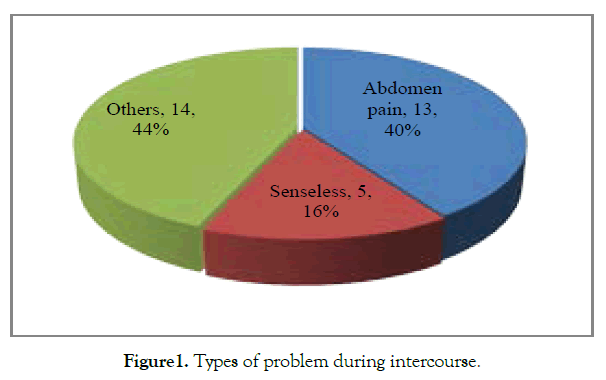
Figure 1. Types of problem during intercourse.
Figure 2 shows that the respondents who face problem during intercourse, among them 9% respondents are facing problems before happening miscarriage and 91% respondents are facing problems after miscarriage.
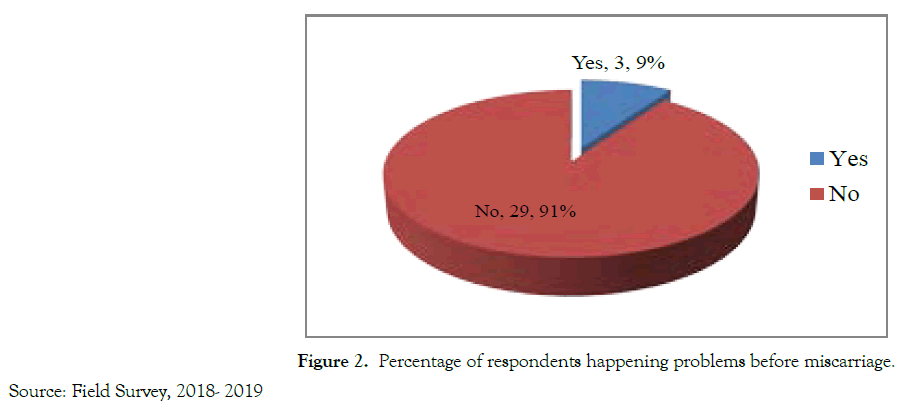
Figure 2. Percentage of respondents happening problems before miscarriage.
Source: Field Survey, 2018- 2019
Table 9 describes that the respondents who were affected by miscarriage among them 31% respondents are conceived at first time and 69% respondents are not conceived at first time. Figure 3 shows that the respondents who were not conceived at first time among those 48% respondents have children and 52% respondents have no children. Table 10 describes that the respondents who have conceived more than one time after miscarriage among them 36% respondents have only one child and 18% respondents have two children, 10% respondents have three children, 10% respondents have more than three children and 26% respondents have no children.
| Responses | Number of the respondents | Percentage (%) |
|---|---|---|
| Yes | 31 | 31.0 |
| No | 69 | 69.0 |
| Total | 100 | 100.0 |
Table 9: Percentage of the respondents' problem at first conception.
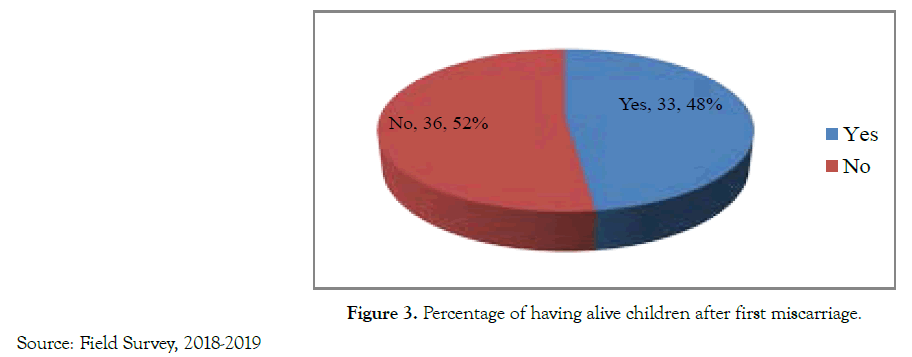
Figure 3. Percentage of having alive children after first miscarriage.
Source: Field Survey, 2018-2019
| Responses | Number of the respondents | Percentage (%) |
|---|---|---|
| One | 36 | 36.0 |
| Two | 18 | 18.0 |
| Three | 10 | 10.0 |
| More than Three | 10 | 10.0 |
| No child | 26 | 26.0 |
| Total | 100 | 100.0 |
Table 10: Percentage of children who have conceived more than one time after miscarriage.
Table 11 describes that 63% respondents are suffering from miscarriage in many times and 37% respondents are not suffering from miscarriage in many times.
| Responses | Number of the respondents | Percentage (%) |
|---|---|---|
| Yes | 63 | 63.0 |
| No | 37 | 37.0 |
| Total | 100 | 100.0 |
Table 11: Percentage of the respondents suffering from miscarriage in many times.
Table 12 describes that the Respondents who were affected by miscarriage among them 6% respondents are conceived one time, 17% respondents are conceived two times, 61% respondents are conceived three to five times and 9% respondents are conceived six to eight times and 7% respondents are conceived more than nine times.
| Responses | Number of the respondents | Percentage (%) |
|---|---|---|
| One | 6 | 6.0 |
| Two | 17 | 17.0 |
| Three to five | 61 | 61.0 |
| Six to eight | 9 | 9.0 |
| More than ten | 7 | 7.0 |
| Total | 100 | 100.0 |
Table 12: Number of respondents conception.
Table 13 describes that the time of conception which was affected by miscarriage, 35% respondents are loss their pregnancy within the first six to eight weeks and 25% respondents are loss their pregnancy within nine to twelve weeks, 12% respondents are loss their pregnancy within thirteen to sixteen weeks, 10% respondents are loss their pregnancy within seventeen to twenty weeks and 18% respondents are loss their pregnancy within twenty one to twenty five weeks.
| Responses | Number of the respondents | Percentage (%) |
|---|---|---|
| Six to eight weeks | 35 | 35.0 |
| Nine to twelve weeks | 25 | 25.0 |
| Thirteen to sixteen weeks | 12 | 12.0 |
| Seventeen to twenty weeks | 10 | 10.0 |
| Twenty one to twenty five | 18 | 18.0 |
| Total | 100 | 100.0 |
Table 13: Time of miscarriage of the respondents.
Table 14 describes that among the respondents 26% respondents are lost their pregnancy in every conception and 74% respondents are not loosed in their pregnancy. Table 15 describes that among the respondents 81% are facing problem to continue pregnancy and 19% respondents are faced no problem to continue pregnancy after miscarriage. Table 16 describes that the respondent who were affected by miscarriage among them 34% respondent can identify the causes of miscarriage and 66% respondent can’t identify the causes of miscarriage.
| Responses | Number of the respondents | Percentage (%) |
|---|---|---|
| Yes | 26 | 26.0 |
| No | 74 | 74.0 |
| Total | 100 | 100.0 |
Table 14: Percentage of respondents occurring miscarriage in every conception.
| Responses | Number of the respondents | Percentage (%) |
|---|---|---|
| Yes | 81 | 81.0 |
| No | 19 | 19.0 |
| Total | 100 | 100.0 |
Table 15: Respondents who facing the problem to continue pregnancy after miscarriage.
| Responses | Number of the respondents | Percentage (%) |
|---|---|---|
| Yes | 34 | 34.0 |
| No | 66 | 66.0 |
| Total | 100 | 100.0 |
Table 16: Percentage of the respondents who were informed about the causes of miscarriage.
Table 17 describes that the respondents who could identify the causes of miscarriage among them 18% exhaustive labour, 9% slip and fall, 23% superstition, 15% first baby abortion, 12% taking medicine and 23% others (wrong treatment, use of contraceptive) causes are responsible for miscarriage.
| Responses | Number of the respondents | Percentage (%) |
|---|---|---|
| Exhaustive labor | 6 | 18 |
| Slip and fall | 3 | 9 |
| Superstition | 8 | 23 |
| First baby abortion | 5 | 15 |
| Taking medicine | 4 | 12 |
| Others | 8 | 23 |
| Total | 33 | 100.0 |
Table 17: Percentage of the causes of miscarriage.
Table 18 describes that among the respondents, 58% respondents took treatment from doctors or any health care center and 42% respondents are not receiving any treatment after miscarriage. Figure 4 shows that among the respondents, 57% respondents received MR, D&C and 14% respondents received pathological test and 19% respondents received medicine and 10% received others. Figure 5 shows that the respondent who have received the treatment and person who paid the treatment cost among them 26% are paid by father, 71% are paid by husband and 3% are paid by others (Brothers, Brother of one's husband).
| Responses | Number of the respondents | Percentage (%) |
|---|---|---|
| Yes | 40 | 40.0 |
| No | 60 | 60.0 |
| Total | 100 | 100.0 |
Table 18: Percentage of the respondents who have received regular antenatal checkup in every pregnancy.
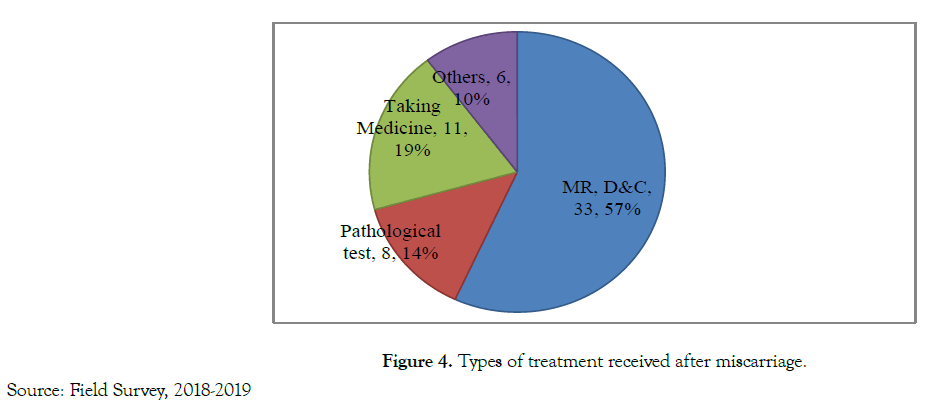
Figure 4. Types of treatment received after miscarriage.
Source: Field Survey, 2018-2019
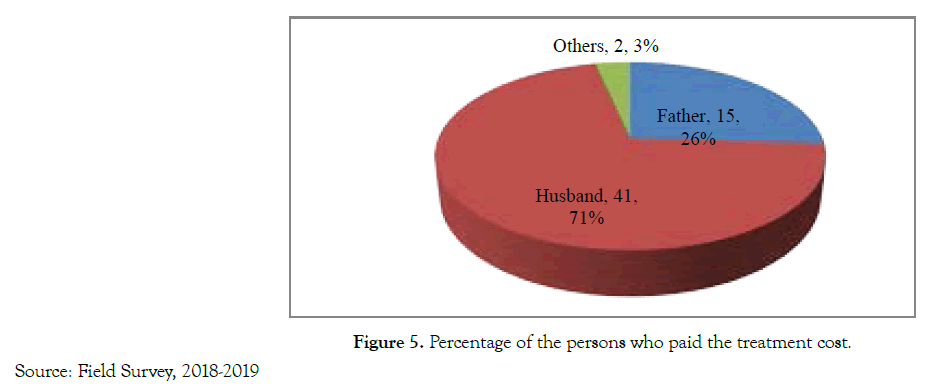
Figure 5. Percentage of the persons who paid the treatment cost.
Source: Field Survey, 2018-2019
Table 19 describes that the Respondents who were affected by miscarriage among them 40% respondent were received the regular antenatal checkup in every pregnancy and 60% respondent were not received the regular antenatal checkup in every pregnancy.
| Responses | Number of the respondents | Percentage (%) |
|---|---|---|
| Yes | 97 | 97.0 |
| No | 3 | 3.0 |
| Total | 100 | 100.0 |
Table 19: Percentage of the respondents who feel bad for those babies.
Table 20 describes that the respondent who were affected by miscarriage among them 97% respondent are feeling bad for those babies and 3% respondent were feel bad at first time not later.
| Responses | Number of the respondents | Percentage (%) |
|---|---|---|
| Mental disorder | 16 | 16.0 |
| Normal | 84 | 84.0 |
| Total | 100 | 100.0 |
Table 20: Percentage of the Respondents psychological Condition after miscarriage.
Table 21 describes that the respondents who were affected by miscarriage among them 16% respondents are faced mental disorder and 84% respondent’s mental condition are normal.
| Responses | Number of the respondents | Percentage (%) |
|---|---|---|
| Yes | 72 | 72.0 |
| No | 28 | 28.0 |
| Total | 100 | 100.0 |
Table 21: Percentage of the Respondents who have physical Problems after miscarriage.
Table 22 describes that among the respondents, 72% respondents have physical problem in a long time after miscarriage and 28% respondents have no physical problem in a long time after miscarriage.
| Responses | Number of the respondents | Percentage (%) |
|---|---|---|
| Yes | 48 | 48.0 |
| No | 52 | 52.0 |
| Total | 100 | 100.0 |
Table 22: Suffering from complication likes infection after miscarriage.
Table 23 describes that who were affected by miscarriage among them48% Respondents were suffering from complication like any infection after incomplete abortion and 52% were not suffering any complication like infection after incomplete abortion.
| Responses | Number of the respondents | Percentage (%) |
|---|---|---|
| Yes | 80 | 80.0 |
| No | 20 | 20.0 |
| Total | 100 | 100.0 |
Table 23: Respondents facing bleeding problem after miscarriage.
Table 24 describes that 80% respondents are facing long time bleeding and 20% respondents are not faced long time bleeding after miscarriage.
| Responses | Number of the respondents | Percentage (%) |
|---|---|---|
| Yes | 24 | 24.0 |
| No | 76 | 76.0 |
| Total | 100 | 100.0 |
Table 24: Percentage of the respondents suffering from reproductive tract infection.
Table 25 describes that the respondent who were effected by miscarriage among them 24% respondent are suffering from reproductive tract infection and 76% respondent are not suffering from reproductive tract infection.
| Number of the respondents | Percentage (%) | |
|---|---|---|
| Yes | 69 | 69.0 |
| No | 31 | 31.0 |
| Total | 100 | 100.0 |
Table 25: Respondents who were suffering from leucorrhoea.
Table 26 describes that 69% respondent are suffering from leucorrhoea and 31% respondent are not suffering from leucorrhoea after miscarriage.
| Responses | Number of the respondents | Percentage (%) |
|---|---|---|
| Yes | 67 | 67.0 |
| No | 33 | 33.0 |
| Total | 100 | 100.0 |
Table 26: Percentage of the respondents suffering from dysmenorrheal after miscarriage.
Table 27 describes that among the respondents 67% respondents are suffering from dysmenorrheal after miscarriage and 33% respondents are not suffering from dysmenorrheal after miscarriage. Table 26 describes that the respondents who were affected by miscarriage among them 30% respondents were blamed by family members and 70% respondents were not blamed by their family members.
| Responses | Number of the respondents | Percentage (%) |
|---|---|---|
| Yes | 30 | 30.0 |
| No | 70 | 70.0 |
| Total | 100 | 100.0 |
Table 27: Family blames the respondents for miscarriage.
Table 28 shows that the respondents who were affected by miscarriage among them 68% respondents husband are played their responsibility after miscarriage and 32% respondents husband are not played their responsibility after miscarriage.
| Responses | Number of the respondents | Percentage (%) |
|---|---|---|
| Good | 68 | 68.0 |
| Bad | 32 | 32.0 |
| Total | 100 | 100.0 |
Table 28: Percentage of respondents' husband's responsibility after miscarriage.
Table 29 describes that 61% good attitude of other members to the respondents and 39% bad attitude of other members to the respondents after miscarriage.
| Responses | Number of the respondents | Percentage (%) |
|---|---|---|
| Good | 61 | 61.0 |
| Bad | 39 | 39.0 |
| Total | 100 | 100.0 |
Table 29: Attitude of other members to respondents after miscarriage.
Figure 6 Shows that the respondents who were affected by miscarriage among them 31% respondents are faced the problem to attend in social program without having children and 69% respondents are not faced any problem to attend in social program without having children. Figure 7 shows that among the respondents, 49% respondents are faced teasing of sterile, 38% respondents are faced not touch any auspicious works and 13% others (Inauspicious, unlucky).

Figure 6. Percentage of the respondents facing problem to attend in social program without having children.
Source: Field Survey, 201
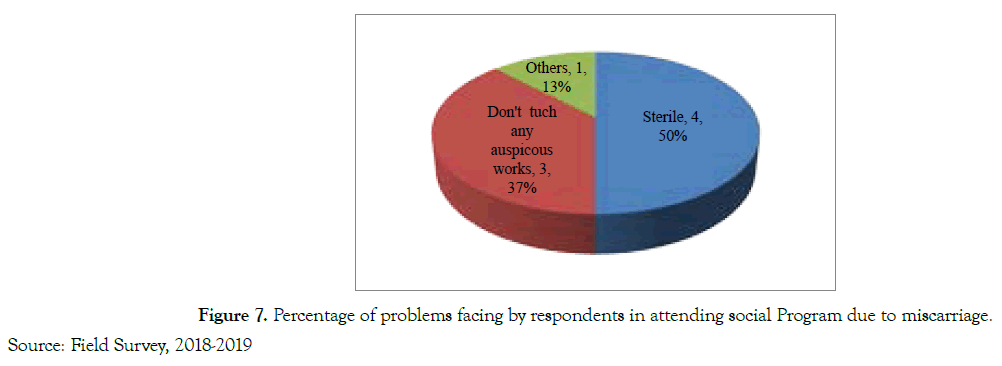
Figure 7. Percentage of problems facing by respondents in attending social Program due to miscarriage.
Source: Field Survey, 2018-2019
Findings of the Study
This study was an attempt to understand better how miscarriage affects on women's health. For this purpose, one village of Bangladesh was selected purposively as the study area. Then 100 respondents were selected from the village named Natun Vuqta Malithia from those which data were collected through direct interview following an interview schedule during November 2018-January 2019. The findings of the study are consistent with the view of the respondents about miscarriage and these affects on their health and the problems they faced during miscarriage and after miscarriage. Findings of the study have started from the chapter three. In this chapter historical background of the study area, population of the study area and overall identity of the respondents are explained briefly. The respondents are selected purposively who have been affected by miscarriage from the village named Natun Vuqta Malithia in Sailkupa Upazila under the Jhenidah District. Respondents from different age group are selected for the study purpose and highest 31% respondents belonged to the age group 30-35 years who are affected by miscarriage because the risk of miscarriage increases in this age, because the qualities of eggs deteriorate. And lowest 4% belonged to the age group 15-20 years.
From the educational point of view, the highest portions 42% of the respondents are illiterate, 2%have finished their HSC education, 3% have completed their graduation degree and 5%have completed post-graduation degree. So, the higher education rate is very low among the respondents. From religious point of view, 92% respondents are following of Islam and 1% is Christianity among the 100 respondents. From the occupational point of view,90% respondents are engaged in household activities. Among 100 respondents, 67% are elonged to the nuclear family and 33% are belonged to the joint family. From the age of first marriage, among the respondents 65% were married before the age of 18 years and limited portion was married in matured age. Among the 100 respondents 74%respondents first delivery were happened between the age 13-20 years and 33%respondents faced the problem during intercourse and among them 41% suffered from abdomen pain, 91% respondents faced problems after miscarriage, 31% respondents faced problem at first conception and 48% respondents have alive children more than one conception. 63% respondents were suffering from more than one miscarriage and most of the miscarriage were occurred within six to eight weeks of gestation. 26% respondents lost their every pregnancy for occurring miscarriage and 81% faced problem to continue pregnancy after miscarriage, 66% could not identify the causes of miscarriage. After miscarriage only 58% respondents took treatment among them 64% received MR and D&C. 40% respondents received only the regular antenatal checkup in every conception and the treatment cost paid by husband 71%. Among 100 respondents 72 faced long time physical problem after her miscarriage and the higher 18% were suffering from uterine problems, 48% were suffering from complication like infection after miscarriage. 80%respondents faced heavy bleeding, 67% were suffering from dysmenorrheal. 31%respondents faced problem to attend in social program without having children due to miscarriage which affects on respondents psychological condition.
Recommendation to the Respondents
• To provide genetic counseling for families with recurrent loss or familial history of genetic diseases.
• To provide medical services.
• To encourage life style changing and counseling for preventable exposures.
• To exercise regularly but not heavily.
• To take bed rest.
• To eat a healthy diet.
• Don't use drugs or smoke.
• To reduce stress.
• To avoid environmental disorder.
• To do normal works but not heavy works.
Miscarriage is the most common complication of early pregnancy which affects on respondents health. It affect’s on respondents social, physical, psychological and sexual life. Most of the respondents are suffering from heavy bleeding, reproductive tract infection, abdomen pain, menstrual problem, uterine infection and cervix problem, and high blood pressure after miscarriage and they cannot identify the causes of their miscarriage and who can identify the causes they believe that it was caused by recent fall or superstition. Most of the miscarriage occurred within 6-8 weeks and the rate of miscarriage increases with the age of the respondents because the qualities of eggs deteriorate. Small portion of respondents have received the treatment and they are not award about their pregnancy because it is occurred within few weeks. Women's have no ability to control miscarriage, but the society and family blamed them for miscarriage and do not attend in social program easily who have no children and badly treated as unlucky inauspicious and sterile. So, the society should be changed their attitude by given proper care for the affected women to recover.
Special thanks to Almighty Allah for give us a great opportunities to complete our research. We sincerely respect the respondents for participating in this study. We deeply respect our household members for inspiring our survey.
No specific funding for the project was sought or obtained.
All researchers participated in (a) providing ideas and designs, or interpreting by analyzing data; (B) draught for important content; And (c) Permission of the ultimate version. This paper has not been reviewed elsewhere not or submitted to any journal for publication. We can represent our-self and our workplace. We also want positional promotion with professional background. No potential conflicts of interest to publish it.
Indexed at, Google Scholar, Cross ref
Indexed at, Google Scholar, Cross ref
Indexed at, Google Scholar, Cross ref
Indexed at, Google Scholar, Cross ref
Citation: Parvin R(2022) Department of Sociology and Social Work, Gono Bishwabidyalay, Savar, Dhaka Bangladesh, J Women's Health Care 11(8):596
Received: 13-Aug-2022, Manuscript No. JWH-22-18846; Editor assigned: 22-Aug-2022, Pre QC No. JWH-22-18846; Reviewed: 12-Sep-2022, QC No. JWH-22-18846; Published: 20-Sep-2022 , DOI: 10.35248/2167-0420.22.11.596
Copyright: © 2022 Rehena Parvin. This is an open access article distributed under the terms of the Creative Commons Attribution License, which permits unrestricted use, distribution and reproduction in any medium, provided the original work is properly cited.